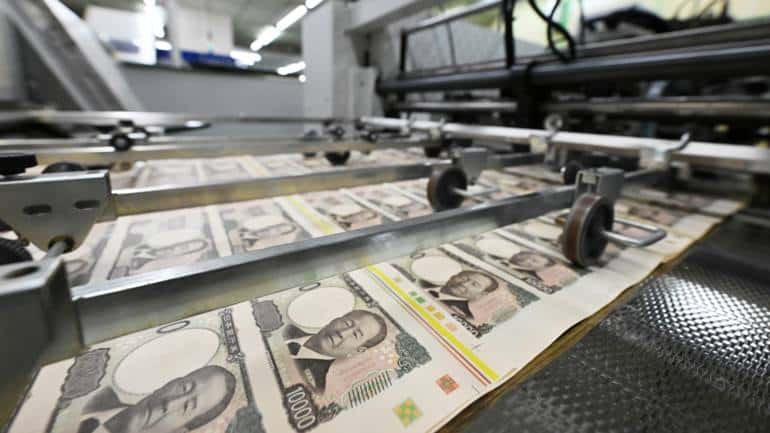Banks across Japan have begun stocking their ATMs with shiny new yen notes sourced from an unlikely location – vibrant yellow flowering paper bush shrubs that grow among forests in the craggy Himalayan mountains in Nepal.
Before entering the wallets of Japanese consumers, the yen notes had a long, complex journey involving months of labour and transport by land and air across thousands of kilometres.
This process has offered a potential new source of income to communities in one of the world’s poorest countries by providing cash for one of its richest.
Though Japan has pushed for more digital payments in recent years, cash still reigns king, and it trails behind other Asian countries such as China, which has gone almost completely cashless.
The path from shrub to the new yen note begins at the foot of the Himalayas, where each spring, the hillsides erupt in yellow – the flowers of the paper bush (Edgeworthia chrysantha). The shrub’s bark has long, strong fibres that are perfect for making thin yet durable paper.
It’s a protracted process; farmers plant seedlings in early summer, harvest their branches in the fall, and then spend several months processing the bark through steaming, peeling, washing and drying.
Once the raw paper is ready in the winter, it’s sent to the Nepali capital, Kathmandu and driven to the western Indian city of Kolkata, where it’s brought by ship to Yokohama, Japan.
After inspection, the National Printing Bureau in nearby Odawara City processes, prints, and cuts the paper into cash.
Japan, which maintains a strong affinity for cash and where cashless payments remain lower than in other major Asian countries, is getting the new banknotes in the first redesign in two decades, integrating advanced technology to enhance security and usability.
“While the move toward a cashless society is progressing, cash remains a reliable payment method that anyone can use anywhere confidently,” says Bank of Japan governor Kazuo Ueda.
Unlike past banknotes, the new bills feature Arabic numerals larger than their Chinese counterparts and they are positioned near the centre, which makes them easier for non-Japanese to understand.
The change in design covers the 10,000 yen, 5000 yen and 1000 yen bills. The 2000 yen bill, which has a small circulation, remains unchanged. Old bills remain legal currency.
The primary goal of the redesign is to prevent counterfeiting. In a ‘world first’, cutting-edge 3D hologram technology has been incorporated into the banknotes, with features such as the orientations of small portraits and other images changing depending on the viewing angle.
However, the introduction has brought challenges. Nomura Research Institute, Japan’s first fully-fledged private comprehensive think tank, estimates that adapting infrastructure, such as ATMs, ticketing machines and vending machines, to accommodate the new banknotes would cost US $10 billion.
According to a survey by the Ministry of Finance, more than 90% of ATMs at financial institutions and 80% to 90% of cash registers at supermarkets and other retailers were expected to be compatible with the new notes at the start.






